ART 105: History of Art to 1300 Exam 3 Study Guide
1/80
There's no tags or description
Looks like no tags are added yet.
Name | Mastery | Learn | Test | Matching | Spaced |
|---|
No study sessions yet.
81 Terms
What was the Byzantine Empire?
Era during Late Antiquity and Middle Ages, had many aspects of Greek and Roman culture.
Who were Justinian and Theodora?
East Roman Emperor (known for legal reforms and military campaigns) and his wife.
What was Constantinople?
Capital city of the Roman Empire, founded by Constantine.
In what way are mosaics used in the Hagia Sophia?
Used in depictions of holy figures (Christ, Virgin Mary, saints, etc.)
What is an icon?
A religious image painted on a wood panel which depicts Christ, the Virgin Mary, or various saints.
How are icons viewed?
As sacred objects.
What is iconoclasm?
The destruction of religious objects.
What is a mihrab?
Niche in the qibla wall of a mosque which points to Mecca.
Who was Charlemagne?
Emperor who united Europe; ruling marked by military campaigns, political reforms, and a culture renaissance.
What did the Edict of Milan (313) do?
Ended the persecution of Christians.
A frequently depicted theme in a Romanesque tympanum was:
The Last Judgment.
In a Romanesque church, an ambulatory served to...
Accommodate the movement of large numbers of pilgrims.
In Early Christian art, Jesus was often depicted in wall paintings and mosaics as ____________________.
A good shepard.
In Gothic art, we see a new interest in...
The Virgin Mary as a caring, maternal figure.
Who vowed to resurrect and recreate a Christian Roman Empire in the medieval era?
Charlemagne.
What is the purpose of a flying buttress?
To support exceptionally tall, thin walls.
The Lindesfarne Gospels were written and decorated by...
One monk.
The Hagia Sophia's revolutionary dome was made using pendentives---what does this mean?
Pendentives are the triangular areas that support a dome built on two intersecting barrel vaults.
One of the main identifying characteristics of Islamic art is...
The prohibition of images of Mohammed.
The towers on the Hagia Sophia are...
Islamic minarets.
The Hagia Sophia is surrounded by four minarets. Why?
It was converted into an Islamic mosque after Turkish forces captured the city in 1453.
A figure holding its hands in the air, called an orant (like the one on this sarcophagus from Santa Maria Antiqua in Rome, ca. 270) depicts an early form of ___________________.
Praying.
"Byzantine" art refers to...
The early Christian art of the area that started as the eastern half of the Roman Empire.
As the French Gothic style evolved, structures became...
Taller, with more stained glass and sculptural decoration.
The economic system of Europe in the Romanesque era was:
Feudalism.
Where did the Gothic style first emerge?
St. Denis.
The two major building types in early Christian architecture are:
Basilica-plan churches & central-plan churches.
Many French Gothic cathedrals are called “Notre Dame de (name of city).”
What does "Notre Dame" mean?
It means the church was dedicated to the Virgin Mary.
For nearly three centuries, a branch of the Muslim Umayyad dynasty was centered in ____________.
Cordoba, Spain.
Abbot Suger’s vision for Gothic architecture emphasized:
Light as a spiritual metaphor.
The Church of San Vitale (Ravenna, Italy 526-547) was built to honor a local saint, Vitalis, but there were political factors involved in its creation too, including...
The Emperor Justinian had just reconquered Ravenna, a strategic area that had been under Ostrogothic control.
As discussed in class, the reliquary statue of Ste. Foy is famous for ________________.
Having been stolen by a monk & taken to his monastery.
The otherworldly & spectacular effect of the images in the Mausoleum of Galla Placidia in Ravenna (ca. 425) depicting saints amid a heavenly backdrop is due to the use of _____________.
Mosaic.
What is a carpet page?
Decorative pages in medieval books that resemble carpets, often with knotted, intertwined designs.
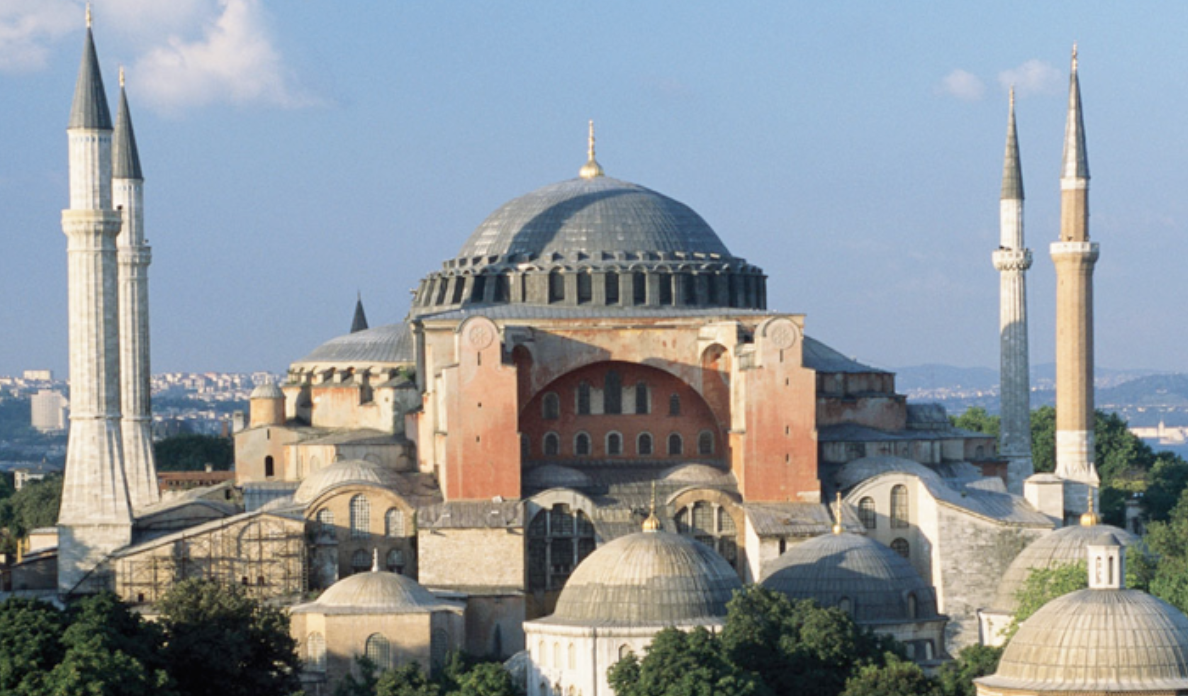
What is this?
Hagia Sophia.
Where is the Hagia Sophia from?
Istanbul, Turkey.
What culture is the Hagia Sophia from?
Byzantine Empire.
When is Hagia Sophia from?
532-7
What is this?
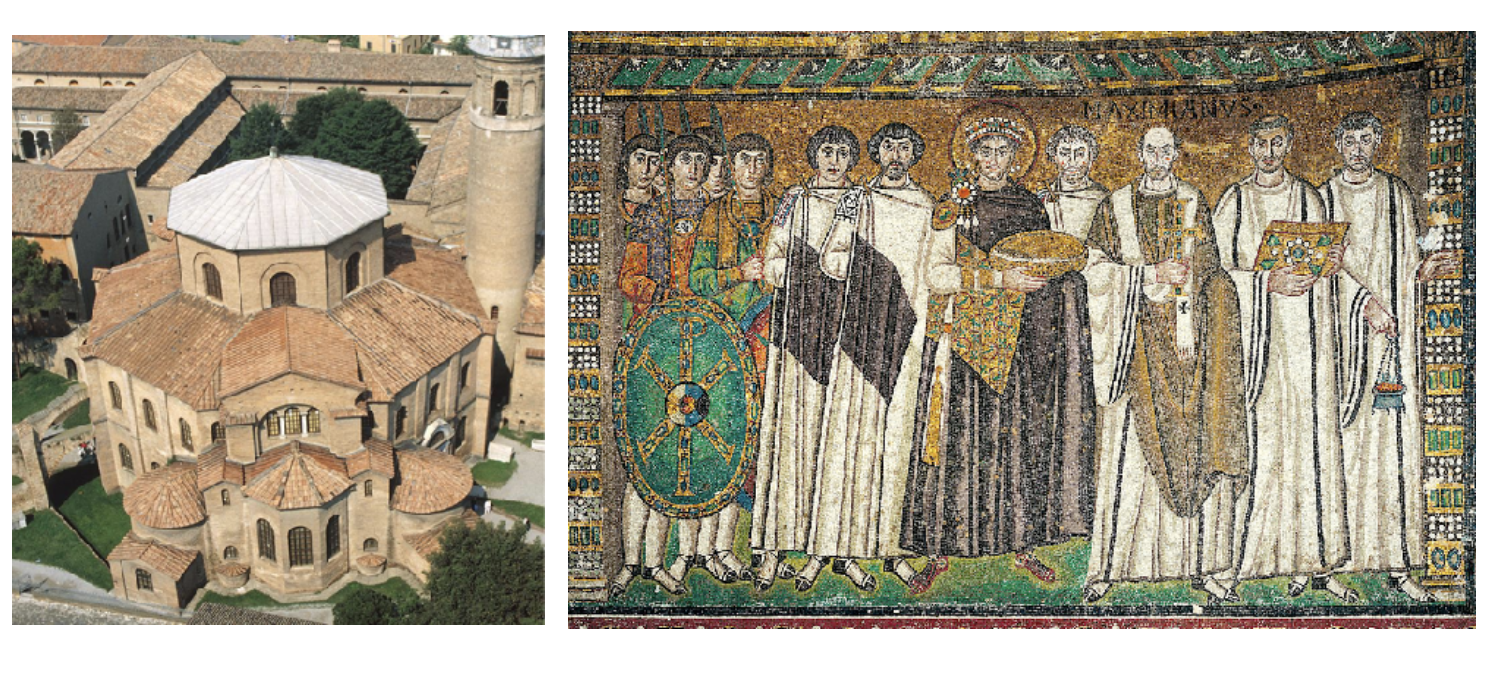
San Vitale.
Where is San Vitale from?
Ravenna, Italy.
What culture is San Vitale from?
Byzantine Empire.
When is San Vitale from?
ca. 547.
What is this?

Virgin and Child.
What culture is Virgin and Child from?
Byzantine Empire.
When is Virgin and Child from?
12th century.
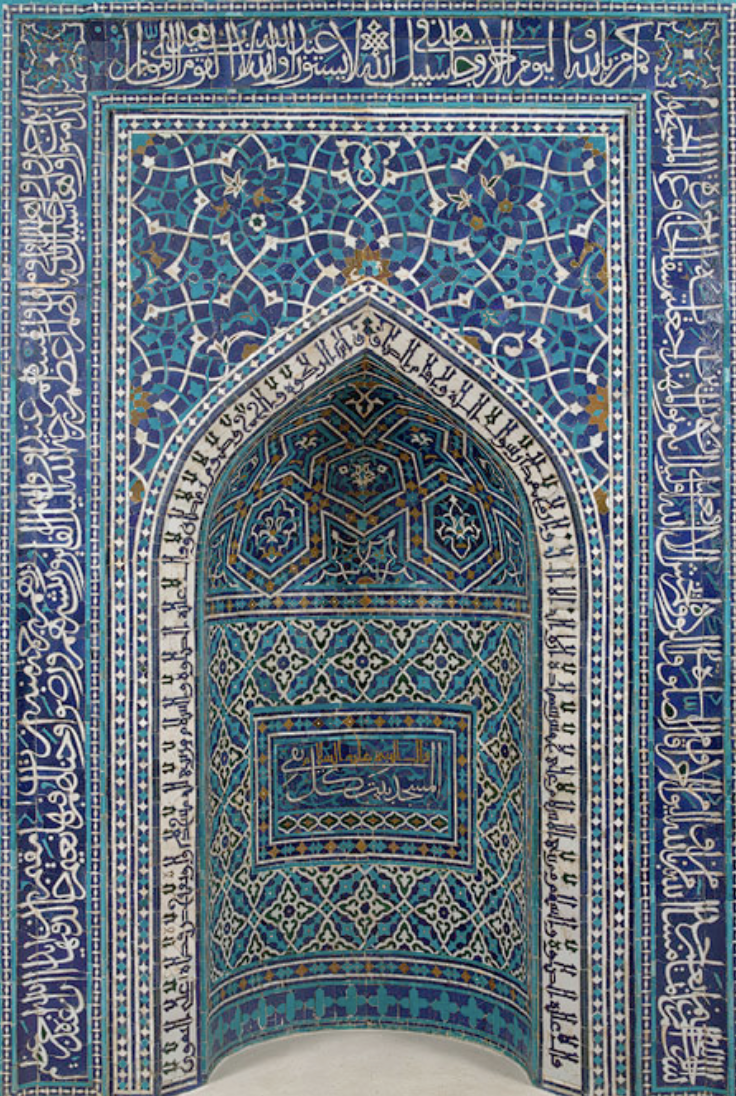
What is this?
Mihrab.
What culture are mihrabs from?
Islamic world.
When is this mihrab from?
ca. 1354.
What is this?
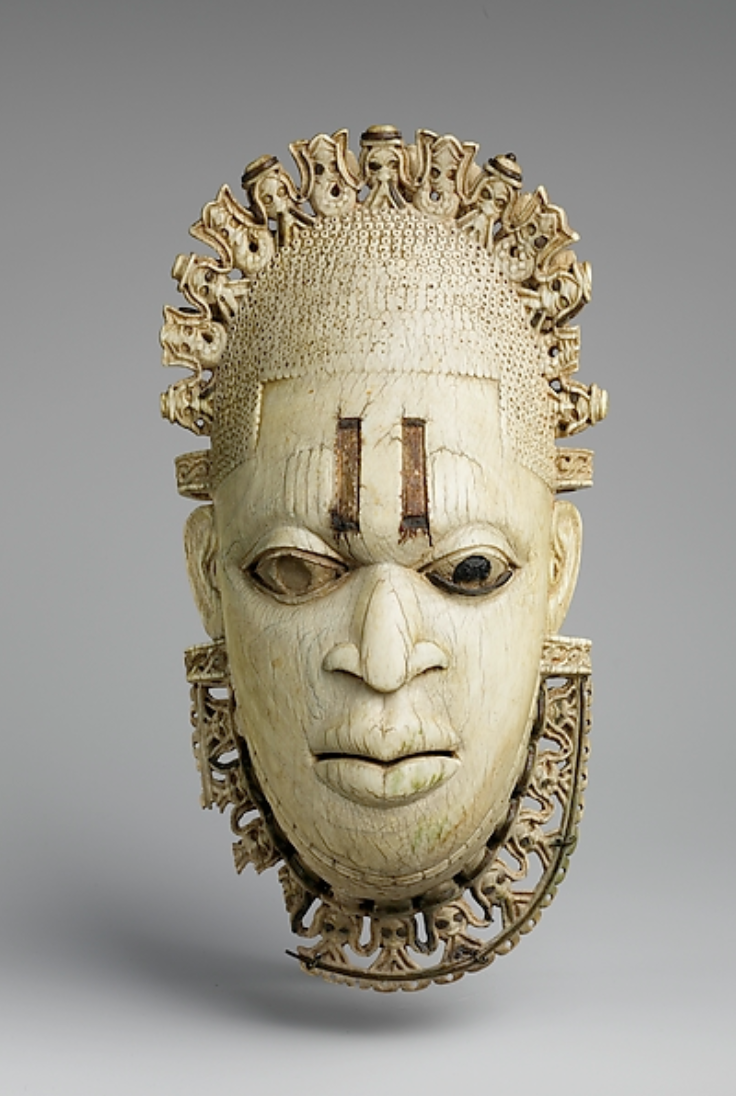
Queen Mother Pendant Mask.
Where is Queen Mother Pendant Mask from?
Benin, Africa.
When is Queen Mother Pendant Mask from?
ca. 1520.
What is this?
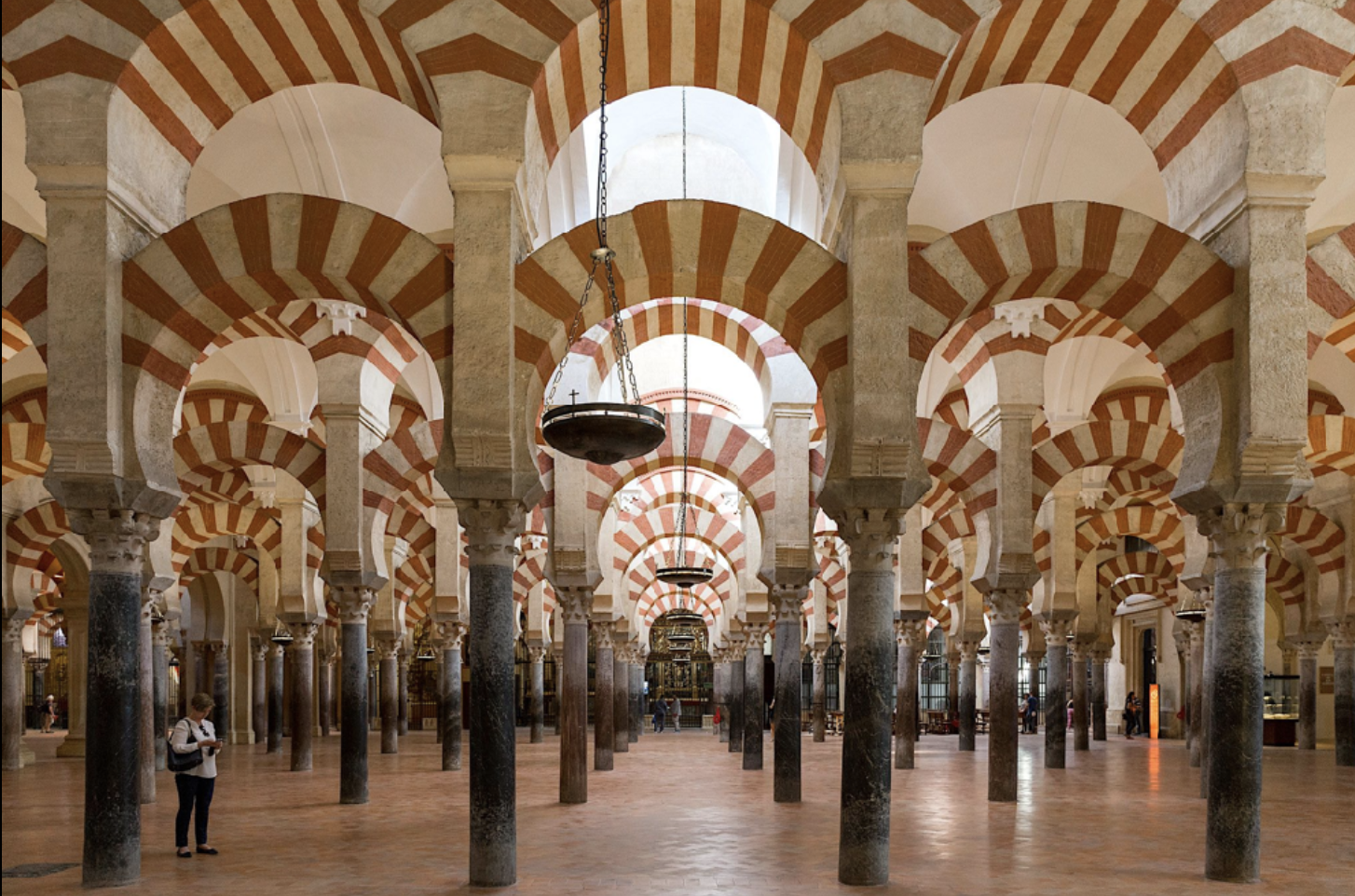
Great Mosque.
Where is Great Mosque from?
Cordoba, Spain.
What culture is Great Mosque from?
Islamic world.
When is Great Mosque from?
Begun 785-6.
What is this?
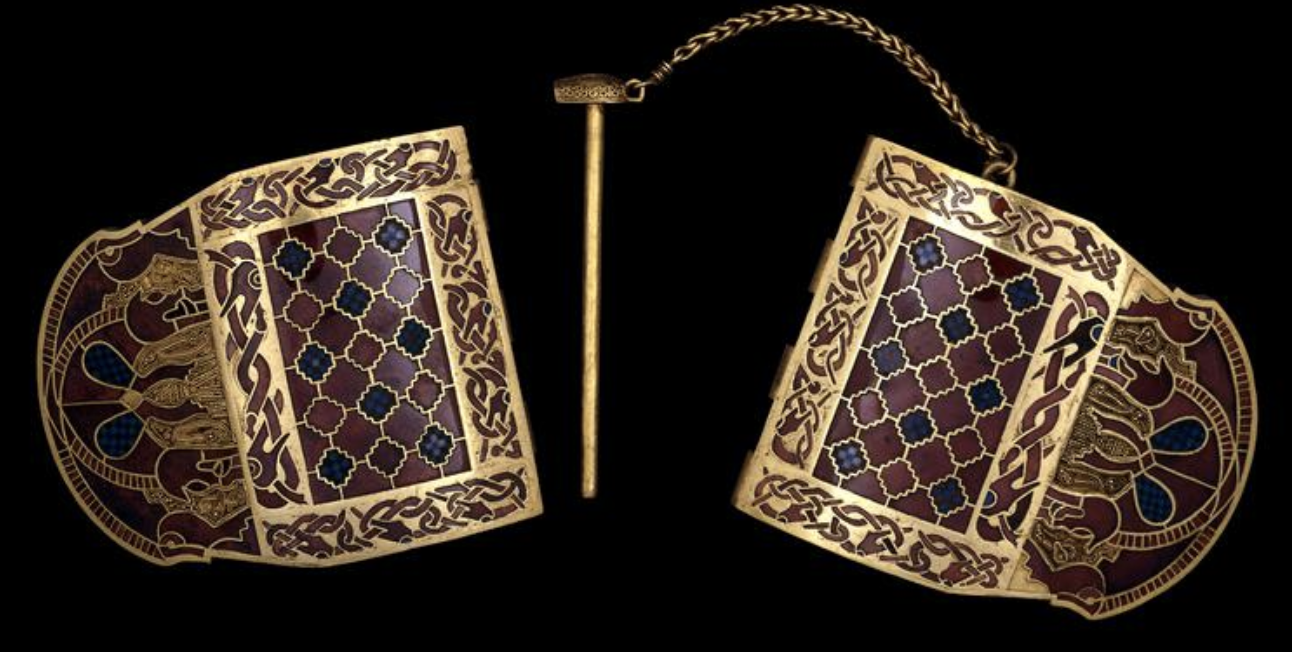
Sutton Hoo Hinged Clasp.
What culture is Sutton Hoo Hinged Clasp from?
Anglo-Saxon.
When is Sutton Hoo Hinged Clasp from?
1st half 7th century.
What is this?
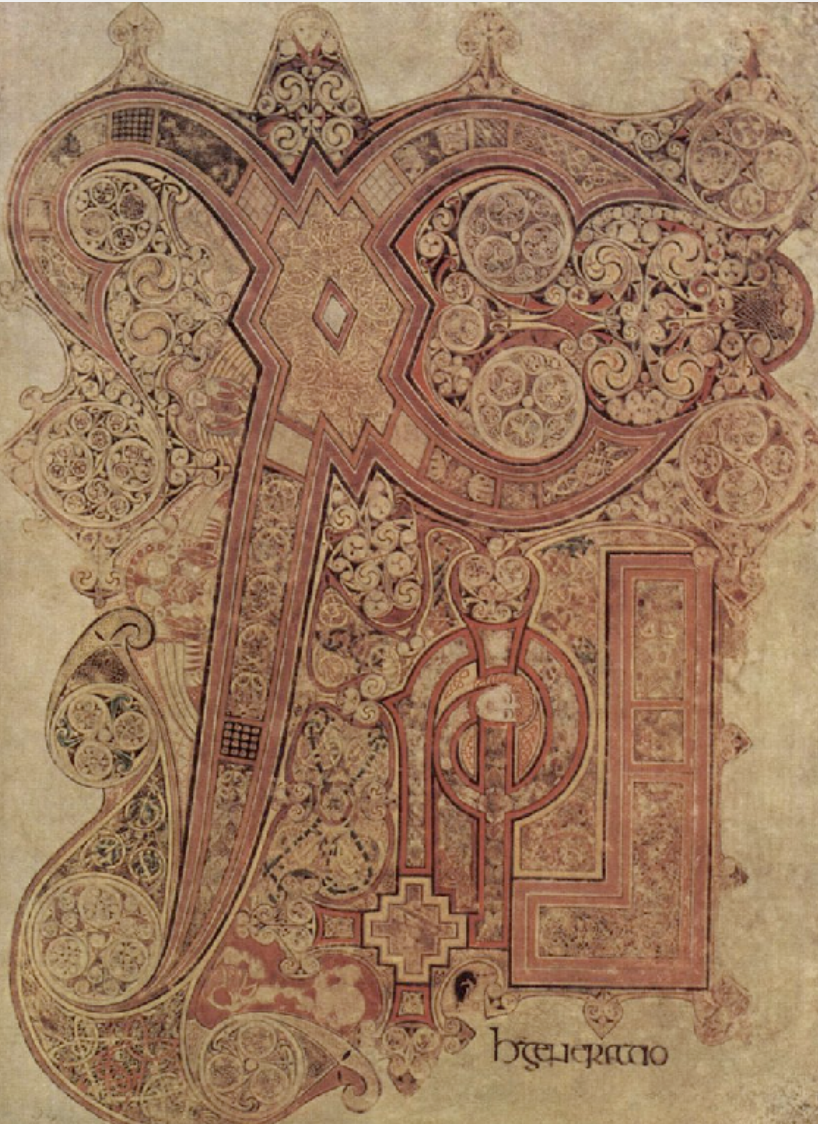
Chi Rho Iota page, Book of Kells.
What culture is Chi Rho Iota page, Book of Kells from?
Early Medieval.
When is Chi Rho Iota page, Book of Kells from?
Late 8th, early 9th century.
What is this?
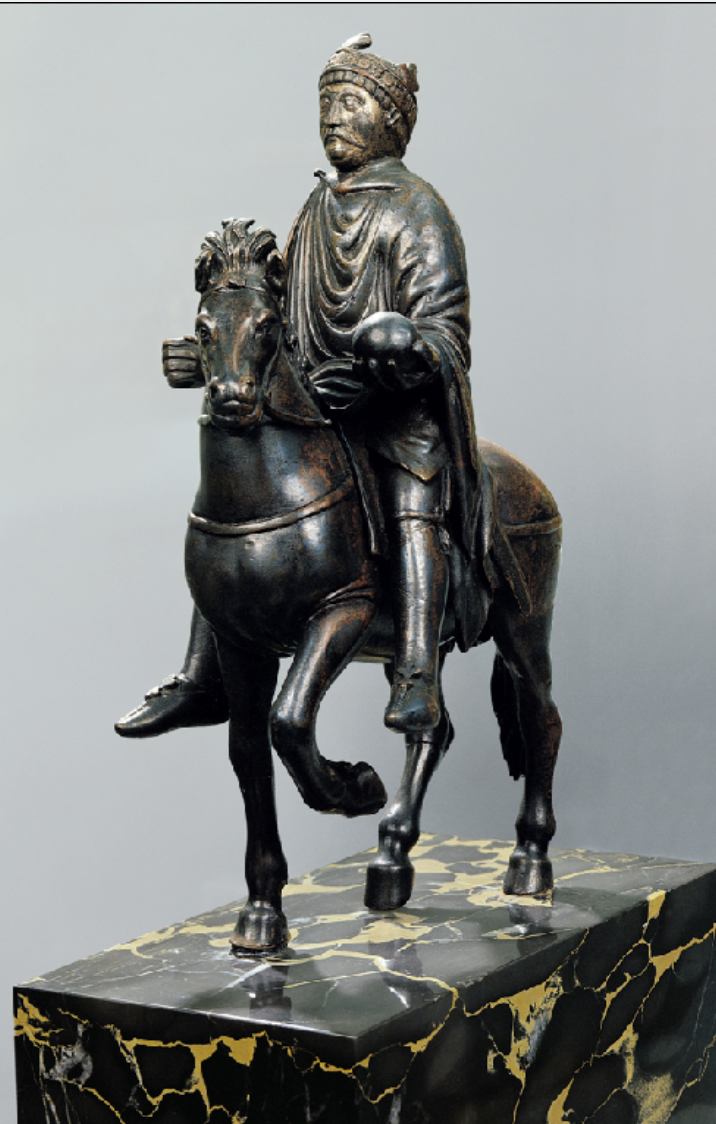
Equestrian Portrait of
Charlemagne.
What culture is Equestrian Portrait of
Charlemagne from?
Carolingian Empire.
When is Equestrian Portrait of
Charlemagne from?
9th century.
What is this?

Reliquary Statue of Sainte-Foy.
What culture is Reliquary Statue of Sainte-Foy from?
Romanesque.
When is Reliquary Statue of Sainte-Foy from?
Late 9th- early 10th century.
What is this?
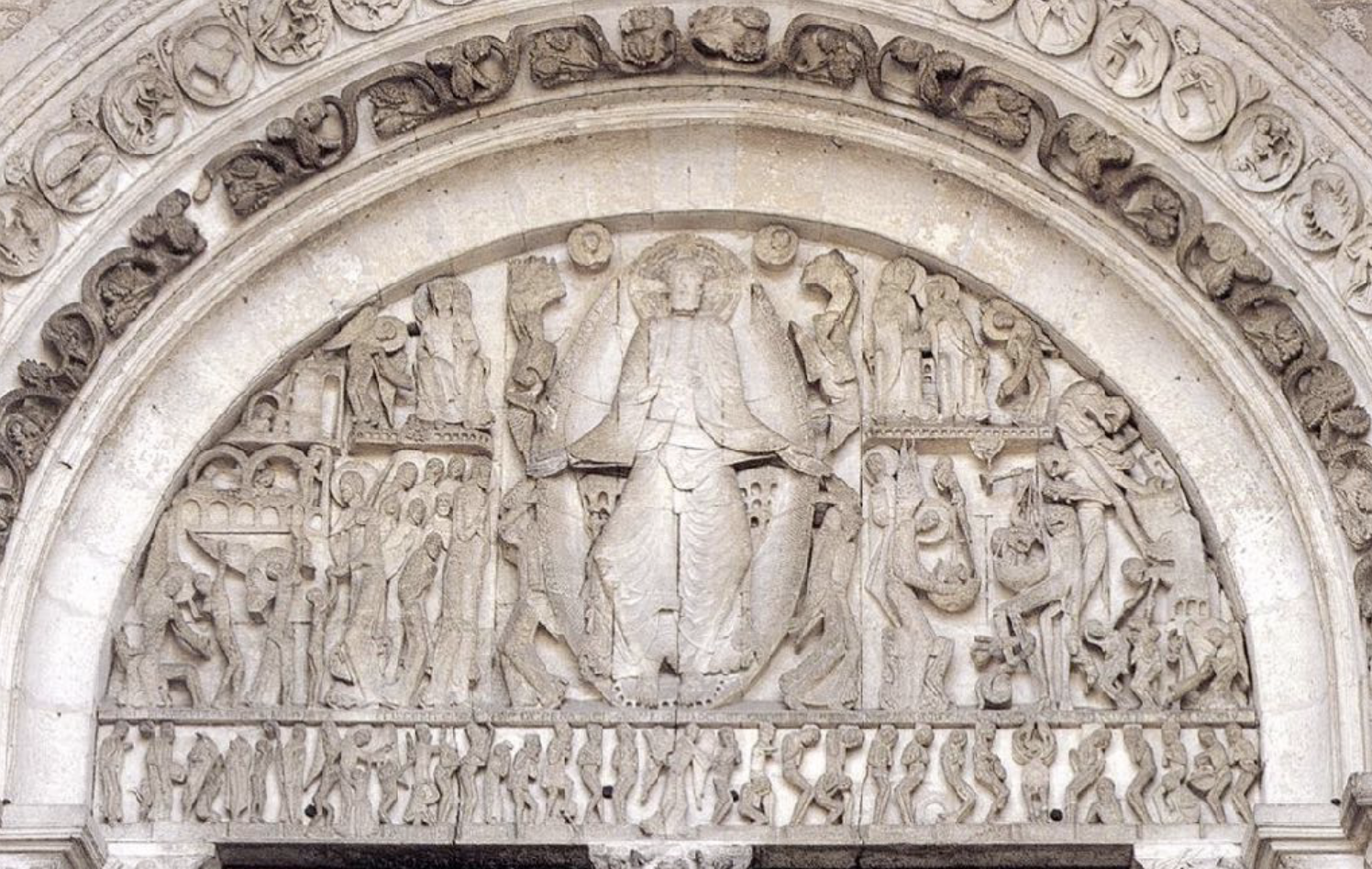
Gislebertus Last Judgment.
What culture is Gislebertus Last Judgment from?
Romanesque.
When is Gislebertus Last Judgment from?
ca. 1130.
What is this?
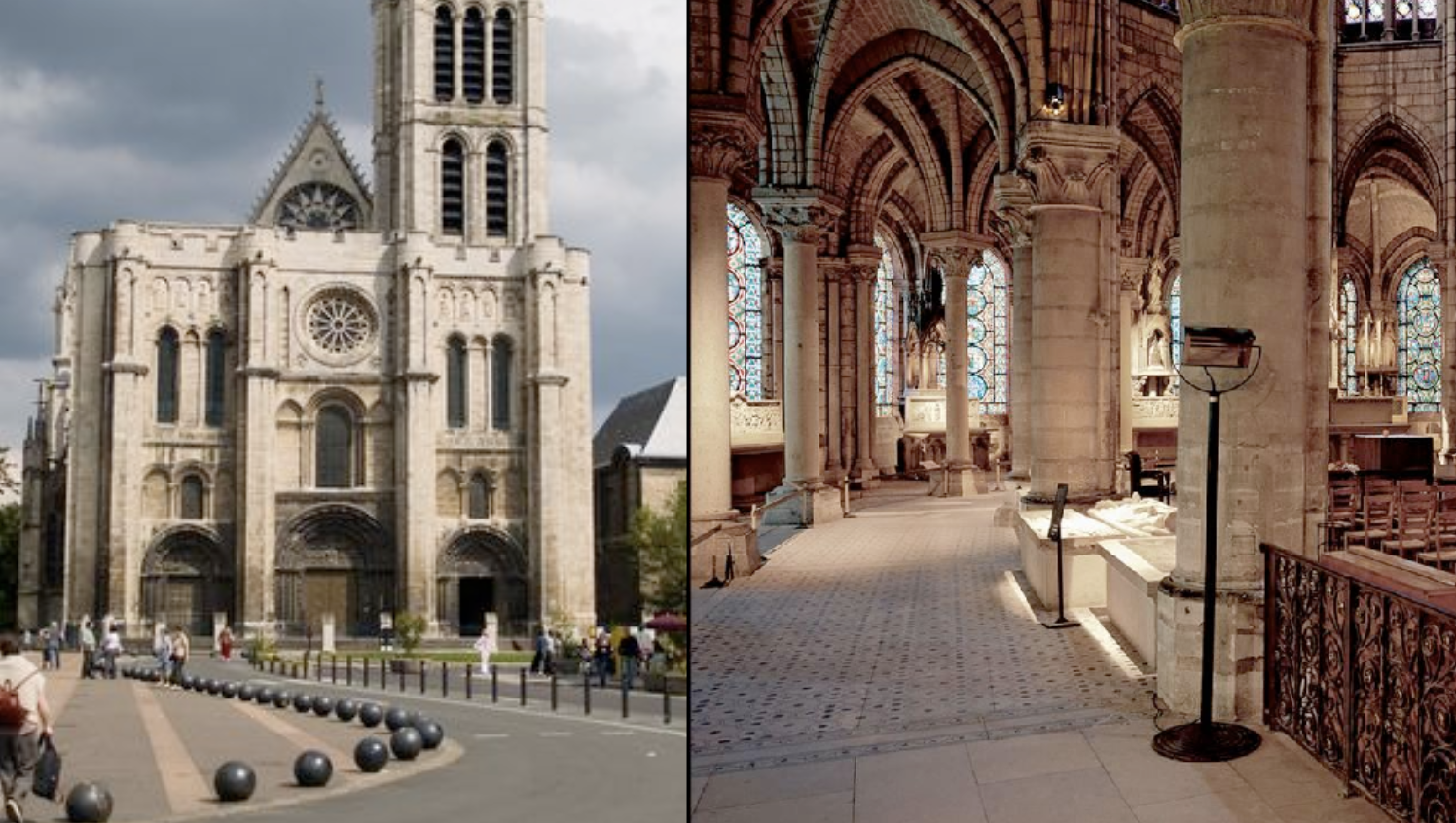
Abbey Church of St. Denis.
Where is Abbey Church of St. Denis from?
St. Denis, France.
What culture is Abbey Church of St. Denis from?
Gothic.
When is Abbey Church of St. Denis from?
1140-4.
What is this?
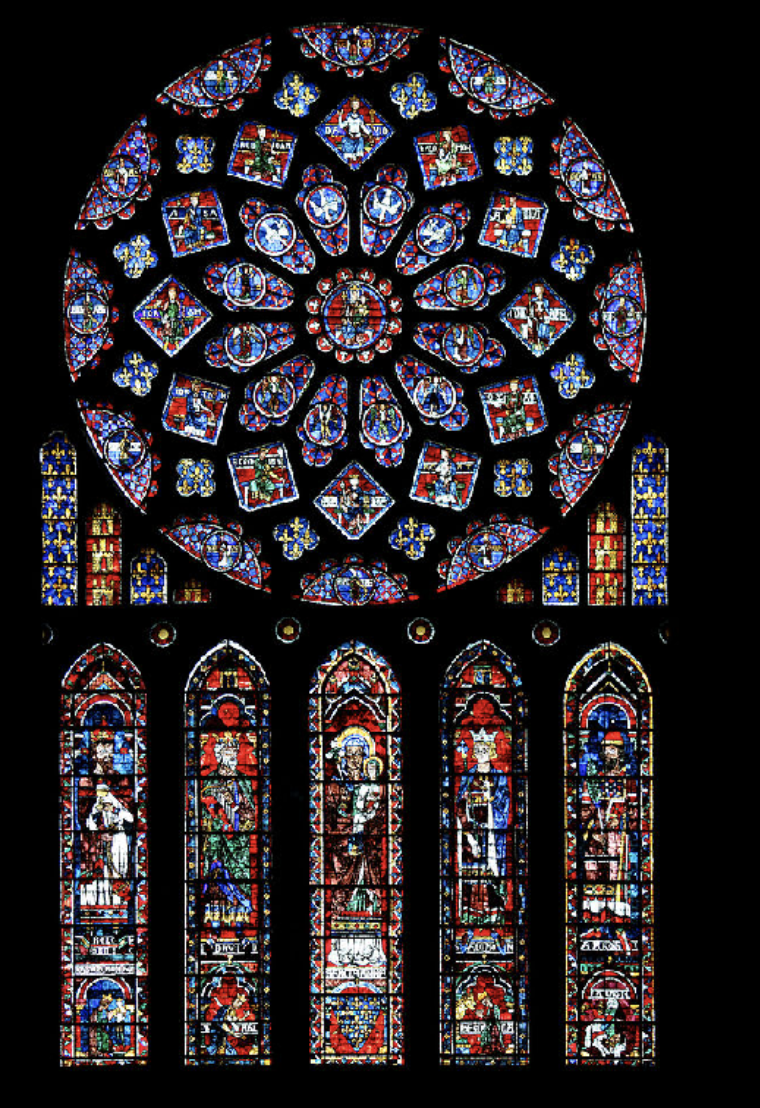
North Rose window, Chartres Cathedral.
What culture is North Rose window, Chartres Cathedral from?
Gothic.
When is North Rose window, Chartres Cathedral from?
ca. 1220.
What was the Chi Rho lota’s function/purpose?
This illuminated manuscript page from the Book of Kells marks the beginning of Matthew 1:18 - the birth of Christ. It was used both as a text to be read aloud and used as a visual devotion.
How did the Chi Rho lota communicate sacred value/cultural power visually?
It uses intricate patterns, Celtic knotwork, symbolic imagery, and vivid colors to show the page’s sacredness.
How do the mosaics in San Vitale revisit the imperial values of Rome?
These mosaics show Emperor Justinian and Empress Theodora surrounded by clergy and court officials. They depict a powerful Roman emperor with divine authority.
How does the Equestrian Portrait of Charlemagne revisit the imperial values of Rome?
This portrait of Charlemagne is influenced by statues like the Equestrian Statue of Marcus Aurelius. The portrait also shows elements of leadership and military strength- things celebrated in older Roman portraits.